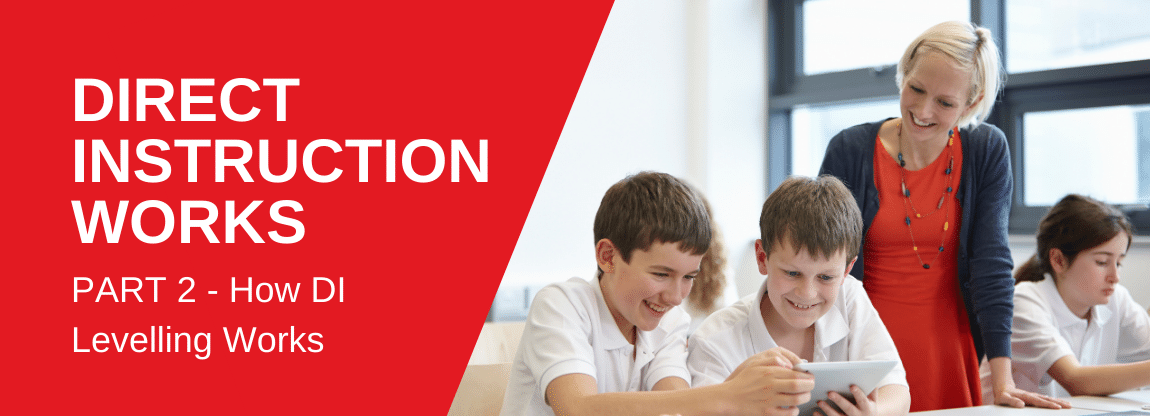Direct Instruction Works - Part 2, How DI Levelling Works
In the second instalment of this powerful Blog by Kevin Surrey, (Director of Direct Instruction (Maths), Direct Instruction South Hub, UK), he discusses the unique levelling of DI Programs that places students at precisely the right entry point in their learning journey.
Re-posted and published with kind permission of Kevin Surrey and the Direct Instruction South Hub Team. Find out more about the work of Kevin and his team at: https://www.direct-instruction.co.uk/
The Beginning of a DI Journey
DI works because it accelerates progress in a very subtle way where new learning is built on extensive mastery of the concepts that come before it. However, the DI learning journey does not start with Lesson 1. To start this harmonisation of knowledge from the children it must start with the placement test. Many schools are learning more about DI and are turning to it to help close the gaps in children’s knowledge and enhance progress. However, the job needs to be done well and buying into an unsuitable levelled programme will mean you start the DI journey badly. Numerous schools have approached us at the South Hub to help support them implementing DI. The first question they ask me is inevitably, 'What package do we buy?' And well, to put it quite frankly I cannot answer that question, but placement testing can!
"Buying a DI package is... based purely and quite rightly on the requirements of the children participating and the knowledge they need to know but sadly do not."
DI Levels are designed for student’s current proficiency
It is important to remember DI programmes are tailored to the students' current proficiency rather than a child’s age expected level or current year group. To put this into some perspective for Connecting Maths Concepts, Level A is what children in Kindergarten would work on while Level F is something a 5th Grade student would be working on (Year 5/6 UK equivalent). However, for many schools in the US this is the way children are taught at a very early age. This comparison is quite revealing when you consider most of my Year 7 students fell into the Level D category with two meeting the grade of Level C. In Reading, children are coming out in Year 7 with reading ages below 7 years old. This cannot be correct, but it is astonishingly something Secondary School teachers are faced with every year. Perhaps DI should be implemented before it comes to this, in Primary Schools, but that is a discussion for another day. Hence, buying a DI package is not about comparing the DI content with related core curriculum strands for specific year groups, nor is it based on age expectancy and what the children should be learning, but is based purely and quite rightly on the requirements of the children participating and the knowledge they need to know but sadly do not.
Investing in the children
The most important investment you will make when purchasing your DI packages is knowing you are giving children, who have a desperately lacking knowledge base to experience learning in a different way. A way that will inspire them to believe in themselves and promote positivity in learning new things and so ignite the acceleration in their learning. Selecting the wrong levelled package, will start their DI journey badly and the effects of it will not be relayed to the children. Buy a level too low and children may find it too easy and then you are not introducing new learning only regurgitating knowledge what they already have mastered. Pick a package to hard and the fluency of lessons gets distorted and the lessons become a constant struggle for both teacher and child. As the teacher ploughs on regardless, nothing gets accomplished and it just embellishes the problems that already exist with knowledge gaps at the foundation levels.
To find out more about DI Programs and how they work, please visit our website at: https://www.mheducation.com.au/schools/direct-instruction
Check in next time when we will continue this Blog as the author discusses the importance and power of the Placement Test.
If you would like to connect or comment on this blog post, please send an email to schools_anz@mheducation.com. This in-box is monitored regularly, and we will respond as soon as possible to your email.

